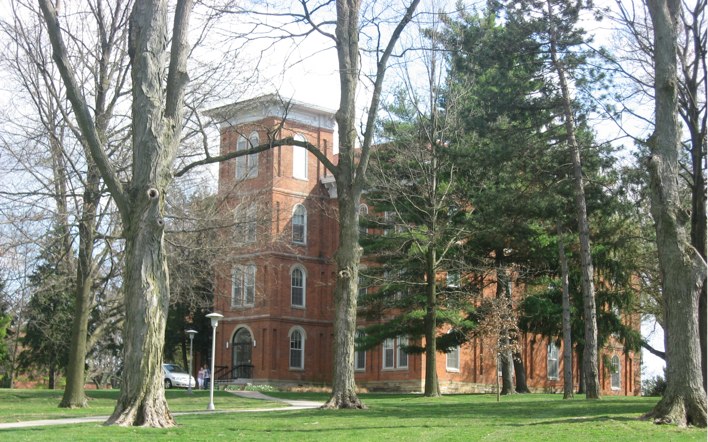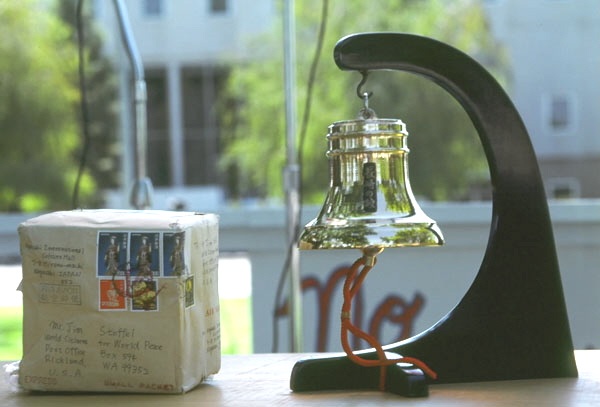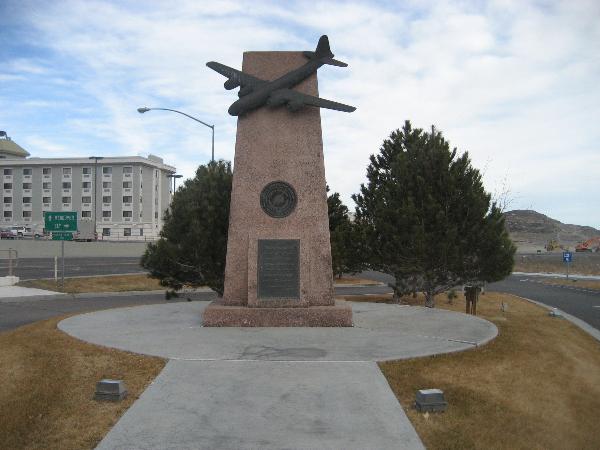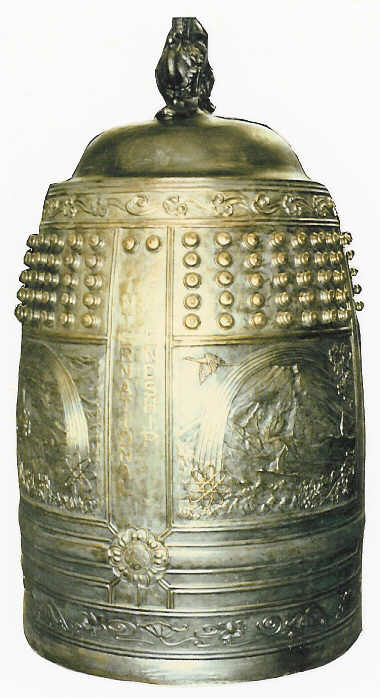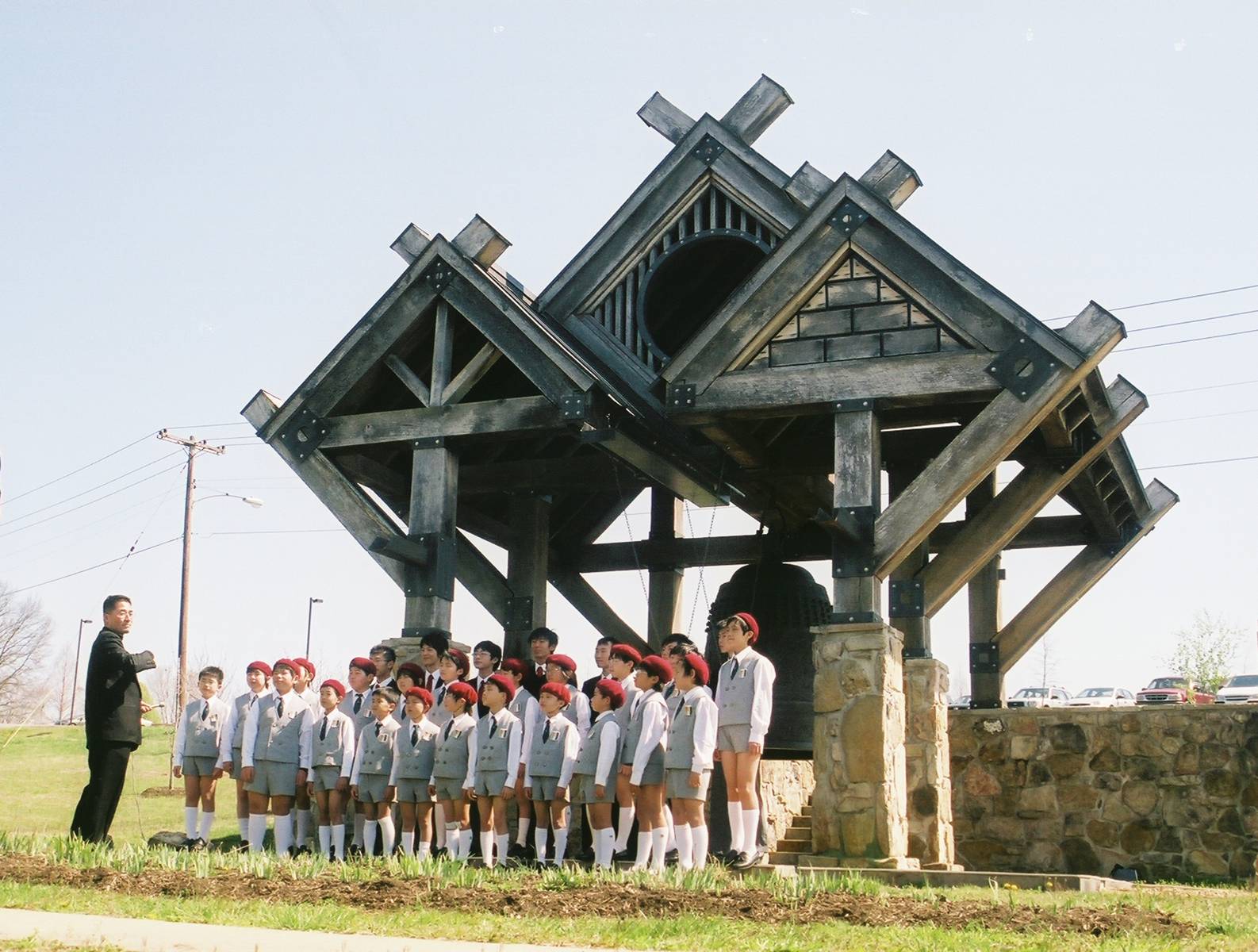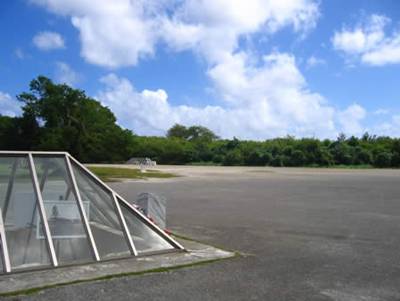
 |  2010? - Friedensglocke aus Nagasaki/Nagasaki Peace Bell, Henri Dunant Museum, Asylstrasse 2, Heiden (Switzerland).
"The Henry Dunant Museum Gentiles obtained after many years of contact with the Red Cross Japan and the authorities of the city of Nagasaki given a copy of the Angelus bell. The famous original is in one of the oldest Christian churches in Japan. The bell was during the atomic bomb attack on Nagasaki on 9 August 1945, with very few damages recovered in the rubble. Since 1988, duplicates are cast away and to places which were the victims of war or natural disasters, such as Hiroshima [qv], Chernobyl [?], Leningrad [qv] or Honolulu [qv].
As a major exception receives Gentiles, in honor of Red Cross founder Henry Dunant [1828-1910] such a peace bell. Gentiles to take out the spirit of peace further into the world. On 13 October 2009 was the 100-pound bell from a delegation of the Henry Dunant Museum (Böhi John and Marlis Hörler Böhi), the Red Cross both Appenzell (Jessica Kehl) and the hospital Gentiles (Othmar Deputy throat. Director, chief physician medicine), to be taken at a ceremony in the Faculty of Medicine Nagasaki, reception. The necessary funds were made available to the city by members of the medical faculty of the University of Nagasaki and residents.
Over six weeks took the sea voyage of the Peace Bell on the freighter 'Louise Schulte' Nagasaki to Hamburg by train via Rorschach to Heiden. Since Monday 29 March 2010 is the Peace Bell of Nagasaki, Japan, in the entrance hall of the hospital Gentiles. At a later stage the Peace Bell will receive its final location at the Henry Dunant Museum and there solemnly inaugurated. [Google translation]" 2010? - Friedensglocke aus Nagasaki/Nagasaki Peace Bell, Henri Dunant Museum, Asylstrasse 2, Heiden (Switzerland).
"The Henry Dunant Museum Gentiles obtained after many years of contact with the Red Cross Japan and the authorities of the city of Nagasaki given a copy of the Angelus bell. The famous original is in one of the oldest Christian churches in Japan. The bell was during the atomic bomb attack on Nagasaki on 9 August 1945, with very few damages recovered in the rubble. Since 1988, duplicates are cast away and to places which were the victims of war or natural disasters, such as Hiroshima [qv], Chernobyl [?], Leningrad [qv] or Honolulu [qv].
As a major exception receives Gentiles, in honor of Red Cross founder Henry Dunant [1828-1910] such a peace bell. Gentiles to take out the spirit of peace further into the world. On 13 October 2009 was the 100-pound bell from a delegation of the Henry Dunant Museum (Böhi John and Marlis Hörler Böhi), the Red Cross both Appenzell (Jessica Kehl) and the hospital Gentiles (Othmar Deputy throat. Director, chief physician medicine), to be taken at a ceremony in the Faculty of Medicine Nagasaki, reception. The necessary funds were made available to the city by members of the medical faculty of the University of Nagasaki and residents.
Over six weeks took the sea voyage of the Peace Bell on the freighter 'Louise Schulte' Nagasaki to Hamburg by train via Rorschach to Heiden. Since Monday 29 March 2010 is the Peace Bell of Nagasaki, Japan, in the entrance hall of the hospital Gentiles. At a later stage the Peace Bell will receive its final location at the Henry Dunant Museum and there solemnly inaugurated. [Google translation]" 
|







